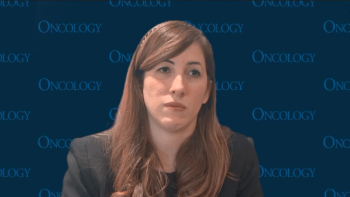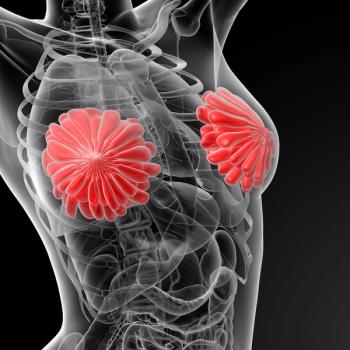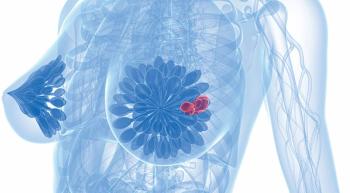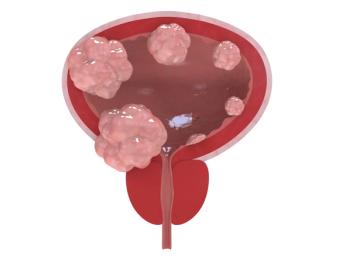
Yoga May Improve DFS, OS in Patients with Non-Metastatic Breast Cancer
Yoga and conventional exercises also demonstrated long-term improvement in quality of life during treatment for non-metastatic breast cancer, according to results presented at the 2022 San Antonio Breast Cancer Symposium.
Yoga and conventional exercises (YCE) demonstrated an improvement in disease free survival (DFS) and overall survival (OS) — as well as long term quality of life benefits — for patients with non-metastatic breast cancer undergoing treatment, according to data presented at the
At a median follow-up of 80 months, results of a randomized controlled trial (NCT02161900) demonstrated an 80% DFS with YCE (n=426) vs 76.7% with conventional exercises alone (CE; n=424) in patients with non-metastatic breast cancer (HR= 0.85, 95% CI= 0.64 – 1.14, P = .28). Of note, because this was a 3.3% difference in DFS it was not deemed statistically significant in this study. Additionally, OS was 85.4% and 83.1% (HR = 0.86, 95%CI = 0.61 – 1.21, P = .38), respectively.
Moreover, 53% of women on YCE showed an improvement in quality of life (QOL) from baseline, compared to 47% in the CE group.
Previous small-randomized studies have evaluated yoga’s impact on QOL in patients with breast cancer. Researchers sought to evaluate the effect yoga had on DFS, the primary endpoint, and OS, the secondary endpoint. An additional secondary endpoint included QOL. These were assessed by EORTC QLQ (at baseline, 6-9 months, 18-21 months), Brief fatigue inventory (BFI) and Visual pain scores (VPS; at baseline, 6-8 months and 12-15 months) and a spirituality questionnaire (SQ; at baseline and 12 to 15 months).
Patients with non-metastatic breast cancer were randomized to YCE or CE only, during and after standard treatment, and 90% of women had surgery first. Median age was 47 vs 48, median pT size was 3 vs 2.85cm, grade 3 tumors were 82.7 vs 82.1%. Disease was hormone receptor positive in 69% vs 69.4% and HER2neu positive in 14.4 vs 13.7% in YCE and CE arms, respectively. Overall compliance was 61% to yoga and physiotherapy in YCE, with 91.75% compliance among those who did yoga for 6-9 months, and 85% to physiotherapy alone in CE.
Additional results demonstrated that physical (P = .043) and emotional function (0.017) improved with YCE. And fatigue (P = .002), pain (P = .031), appetite loss (< 0.001), arm symptoms (0.035) and systemic therapy side effects (0.036) were reduced at 6-9 months in patients who received YCE. Of note, improvements were sustained in physical (P = .036) and emotional function (P = 0.008) at 54 months.
After adjuvant therapy, median fatigue score was lower in patients on YCE compared to those on CE (11.11 vs 22.22, P = .002), as measured by QLQ C30. Likewise, median BFI scores of severity fatigue were 5 in YCE and 6 in CE at baseline but were reduced to 3 after one year in both groups. It was then reduced to 0 in the YCE arm at 2 years, which was sustained until 4 years, whereas the median score of fatigue stayed at 3 in the CE arm (P = .04, .03 at 2 and 4 years respectively).
Patients in the YCE group experienced less severe pain regarding VPS, specifically in the breast wall (p=0.018 at 24 months). Additionally, there were no differences in spirituality changes but less deterioration compared to baseline was noted in the YCE group.
“This is the first study showing a long-term benefit of quality of life related to yoga for women on treatment for breast cancer,” said Dr. Dr. Nita S Nair, lead author on the study and professor and consultant surgeon at Tata Memorial Centre in Mumbai, India, during the presentation. “Yoga is a low-cost complementary therapy that improves quality of life and allows for patients to complete treatment with factors that impact day to day activity.”
Reference
Nair N.S., Goel, N.S., Parmar, V, et al. The role of Yoga as a complementary therapy in women undergoing treatment for breast cancer: A randomized controlled trial. Presented at: 2022 San Antonio Breast Cancer Symposium; December 6-10, 2022; San Antonio, TX. Abstract PD8-04.
Newsletter
Stay up to date on recent advances in the multidisciplinary approach to cancer.
















































































